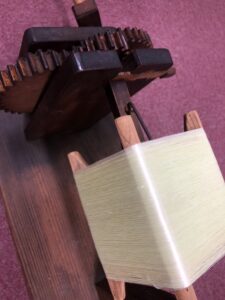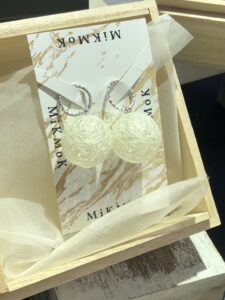Why do manufacturing in Kiryu?
After going to university and getting married,I left my hometown.
I felt that every time I returned to my hometown,
the comfort of the place called Kiryu.
Why is it so comfortable?
Blessed with nature
and historical scenery.
And the many people with high sensitivity.
We are committed to making things that will be a mark of our hometown of Kiryu.
With such an ideal in mind
"MiKMoK"
"Made in Kiryu Mark of Kiryu"
I decided on the name and started making accessories.
The Important Preservation District for Groups of Traditional Buildings, which has been recognized as a Japanese Heritage Site.
Not far from this area
We were fortunate enough to inherit an old private house
renovated it with my family and we started to live in.
From here,to transmit the spirit of craftsmanship,
and I hope many people to visit the elegant streets of Kiryu.
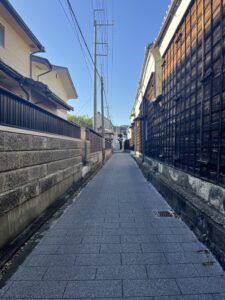
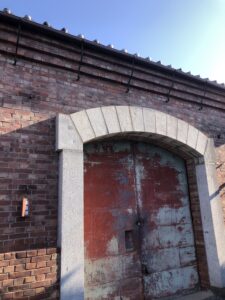
How we started making cocoon
I looked up suddenly at a Japanese restaurant.
What was there?
A large wicker sphere lighting fixture.
I thought it would be cute if I made it smaller and put it on my ear.
I suddenly had such an image.
This is made of rattan, though,
I live in Kiryu.
I might want to make it out of threads.
If I'm going to make it anyway...
Gunma's silk thread would be ideal!
Such an inspiration struck me.
But how should I make it?
I wondered how to make a small hollow sphere with silk thread?
Using various materials and methods.
I repeated trial and error over and over again.
I finally arrived at the present materials and production method.
One weaving factory in Kiryu City,
there was no successor.
Silk threads that were unused.
The threads are
Gunma Prefecture's original silkworm breed.
"Gunma 200"
It is the most ideal yarn for me.
Thus
"COCOON" using Gunma 200 was born.
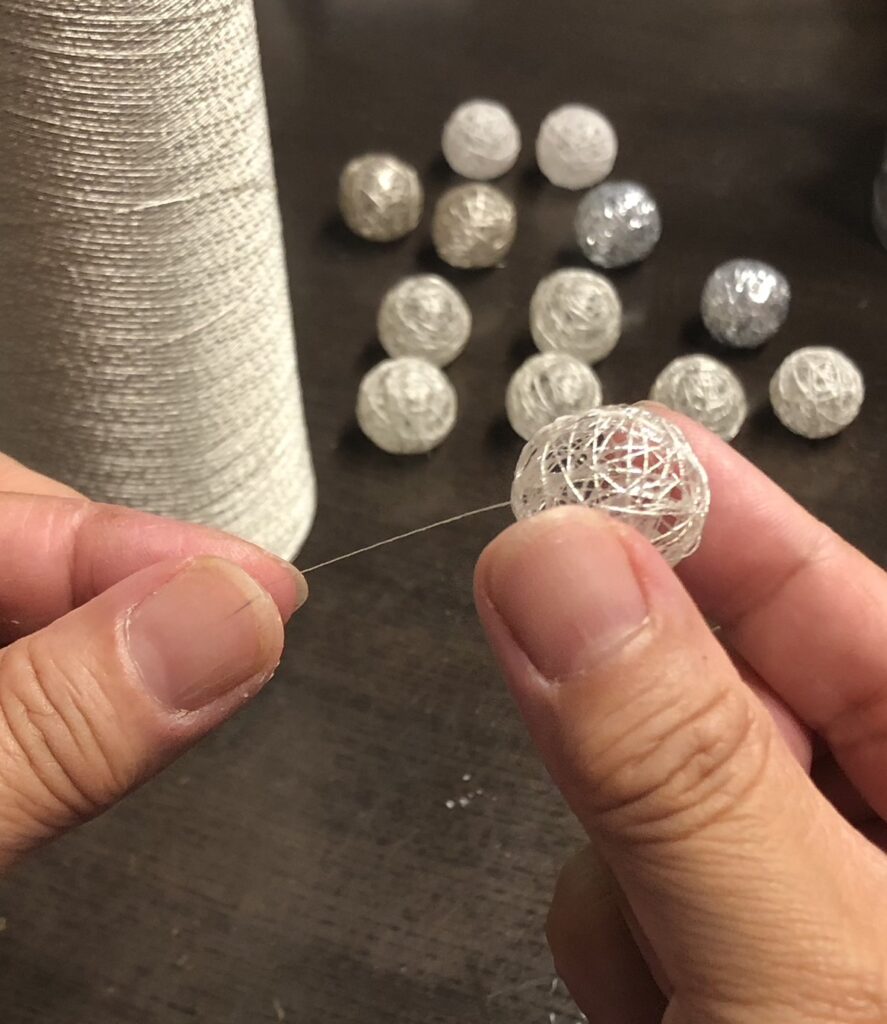
Encounters with silkworm silk
I started making "COCOON".
I developed a longing for one thing.
It is,
It is said to be the diamond of threads,to make a "COCOON" using wild silkworm silk.
The wild silkworm is a native to Japan, also called mountain cocoons.
Domesticated silkworm
eat mulberry leaves.
On the other hand,
wild silkworms eat the leaves of beech trees such as sawtooth oak and oak.
Then, they make light green cocoons.
The number of wild silkworms is very small nowadays.
Miraculously
There is a person who produces wild silkworm silk in our hometown Kiryu.
What a fate!
He knew my father who passed away.
My beloved father brought me together.
In this way,with the finest local wild silkworm yarn,
I made the "COCOON".
